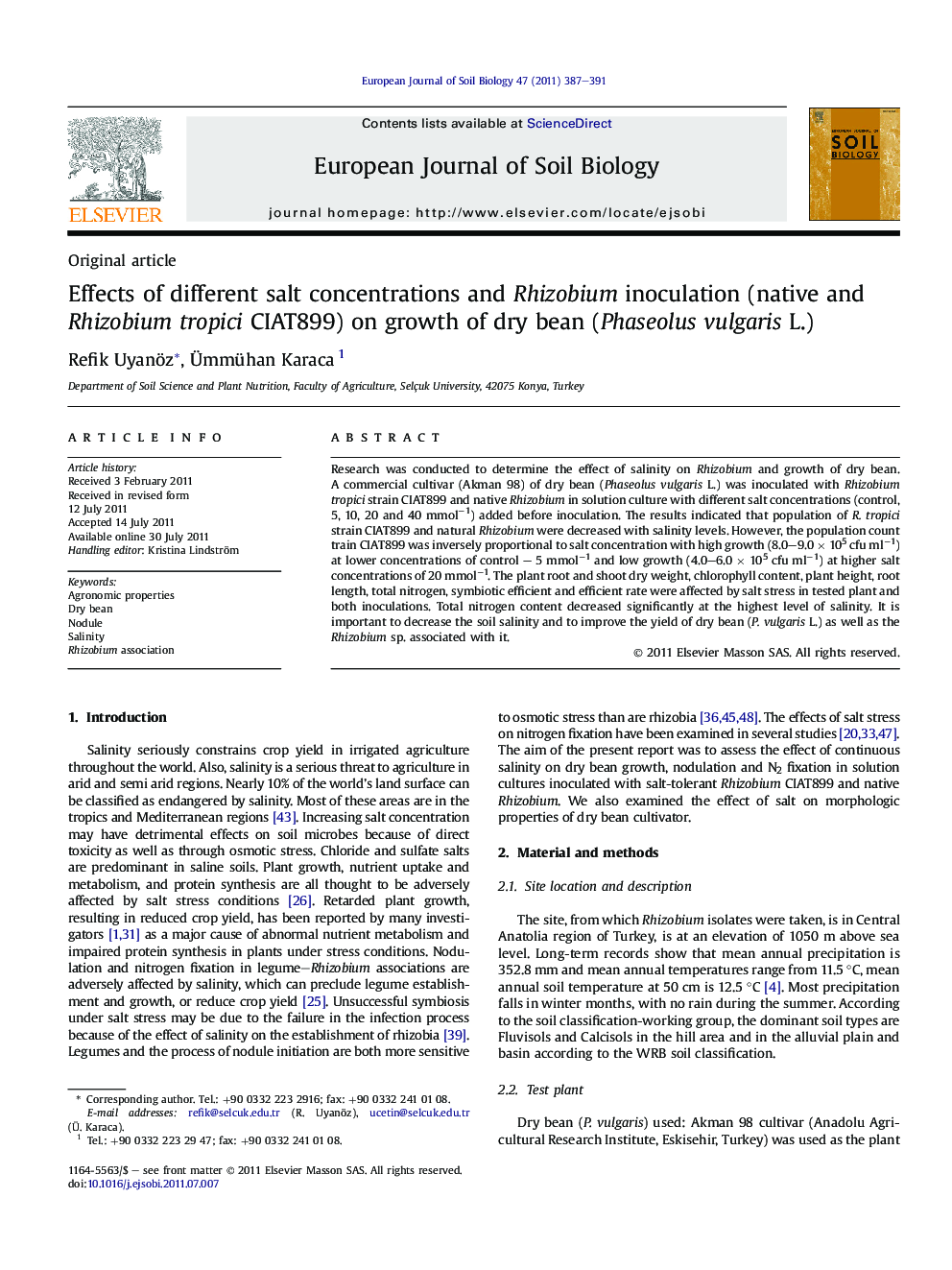| Article ID | Journal | Published Year | Pages | File Type |
|---|---|---|---|---|
| 4392140 | European Journal of Soil Biology | 2011 | 5 Pages |
Research was conducted to determine the effect of salinity on Rhizobium and growth of dry bean. A commercial cultivar (Akman 98) of dry bean (Phaseolus vulgaris L.) was inoculated with Rhizobium tropici strain CIAT899 and native Rhizobium in solution culture with different salt concentrations (control, 5, 10, 20 and 40 mmol−1) added before inoculation. The results indicated that population of R. tropici strain CIAT899 and natural Rhizobium were decreased with salinity levels. However, the population count train CIAT899 was inversely proportional to salt concentration with high growth (8.0–9.0 × 105 cfu ml−1) at lower concentrations of control – 5 mmol−1 and low growth (4.0–6.0 × 105 cfu ml−1) at higher salt concentrations of 20 mmol−1. The plant root and shoot dry weight, chlorophyll content, plant height, root length, total nitrogen, symbiotic efficient and efficient rate were affected by salt stress in tested plant and both inoculations. Total nitrogen content decreased significantly at the highest level of salinity. It is important to decrease the soil salinity and to improve the yield of dry bean (P. vulgaris L.) as well as the Rhizobium sp. associated with it.
► We examine the effect of salt on dry bean inoculated with Rhizobium (CIAT899) and natural Rhizobium. ► The inoculations are significantly different from each other. ► Agronomic and symbiotic efficient results indicate that salinity concentration can cause severe damage to Phaseolus vulgaris.
